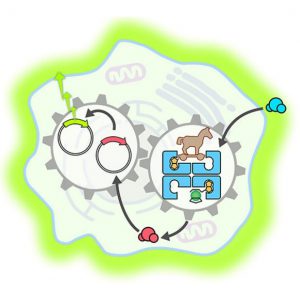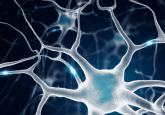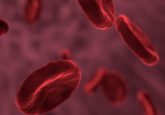Artificial enzymes

Chemical reaction cascades have been generated in a cell using an artificial enzyme as a catalyst.

Let there be light: An artificial metalloenzyme (blue) penetrates a mammalian cell, where it accelerates the release of a hormone (blue to red spheres). This activates a gene switch (circles with arrowheads), which then leads to the production of a fluorescent indicator protein (light green glow around the cell). (Image: University of Basel, Yasunori Okamoto)
Scientists at the University of Basel (Switzerland), University of Geneva (Switzerland) and ETH (Zurich, Switzerland) have created an enzyme that can penetrate a mammalian cell and accelerate hormone production. The results, published in Nature Communications, show promise for synthetic biology where manmade materials combine to enhance natural systems.
Enzymes naturally catalyze chemical reaction cascades in the cell. However, these enzymes are generally very specific to their associated substrates and reactions and cannot adapt to accelerate alternative reactions. Artificial enzymes can be much more adaptable and versatile.
Successfully achieving in vivo functionality can be very difficult as most of these enzymes do not function well unless under strictly controlled conditions. Nevertheless, the researchers managed to develop a small-molecule metalloenzyme that overcame these obstacles to deploy its catalytic function.
A metalloenzyme is a protein that includes a catalytic metal. In this experiment, it accelerated the production of a hormone, initiating a chemical reaction cascade.
This work shows promising results for emerging synthetic biology approaches that will complement the existing biochemical ones already employed in labs across the world.





